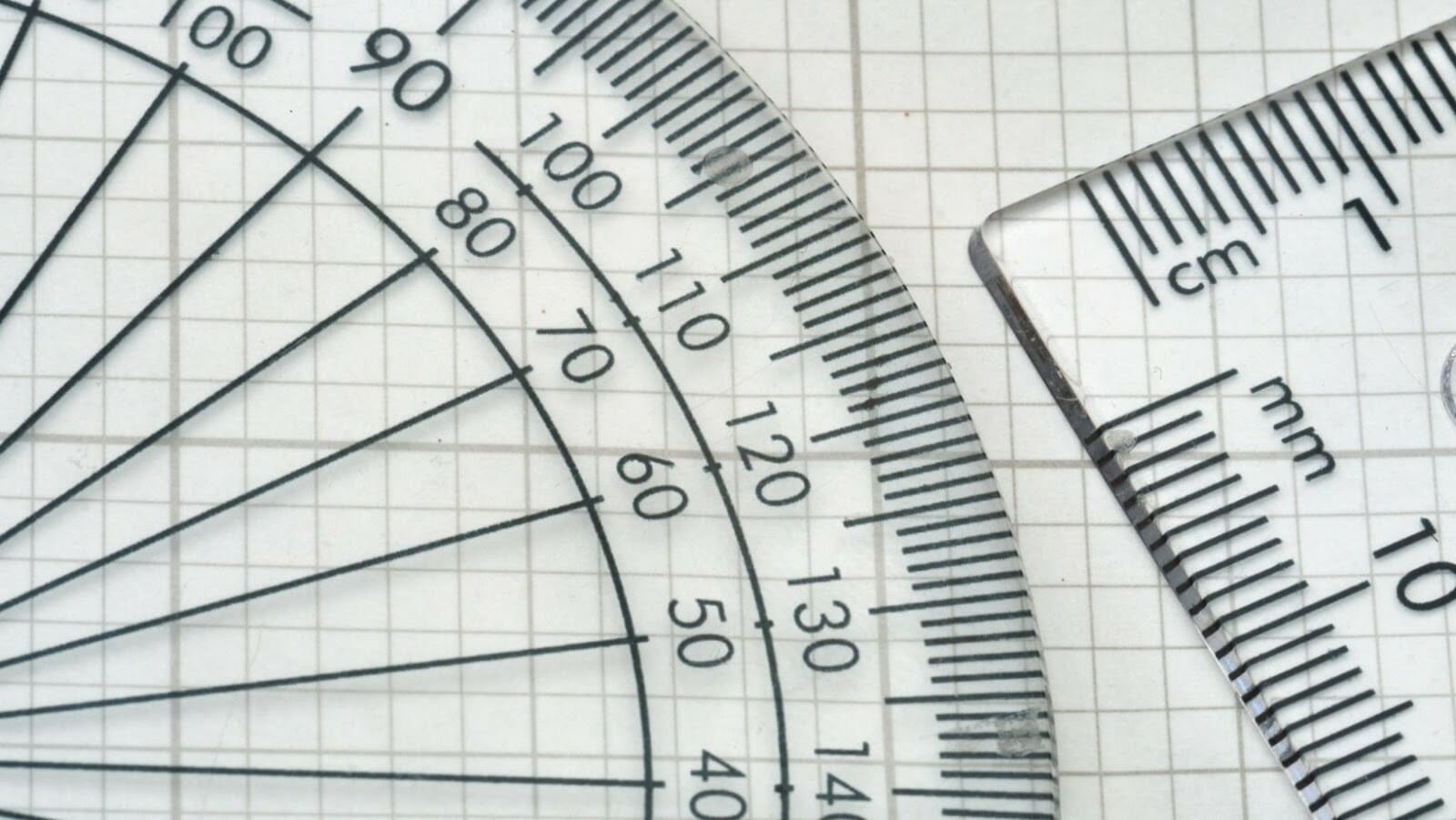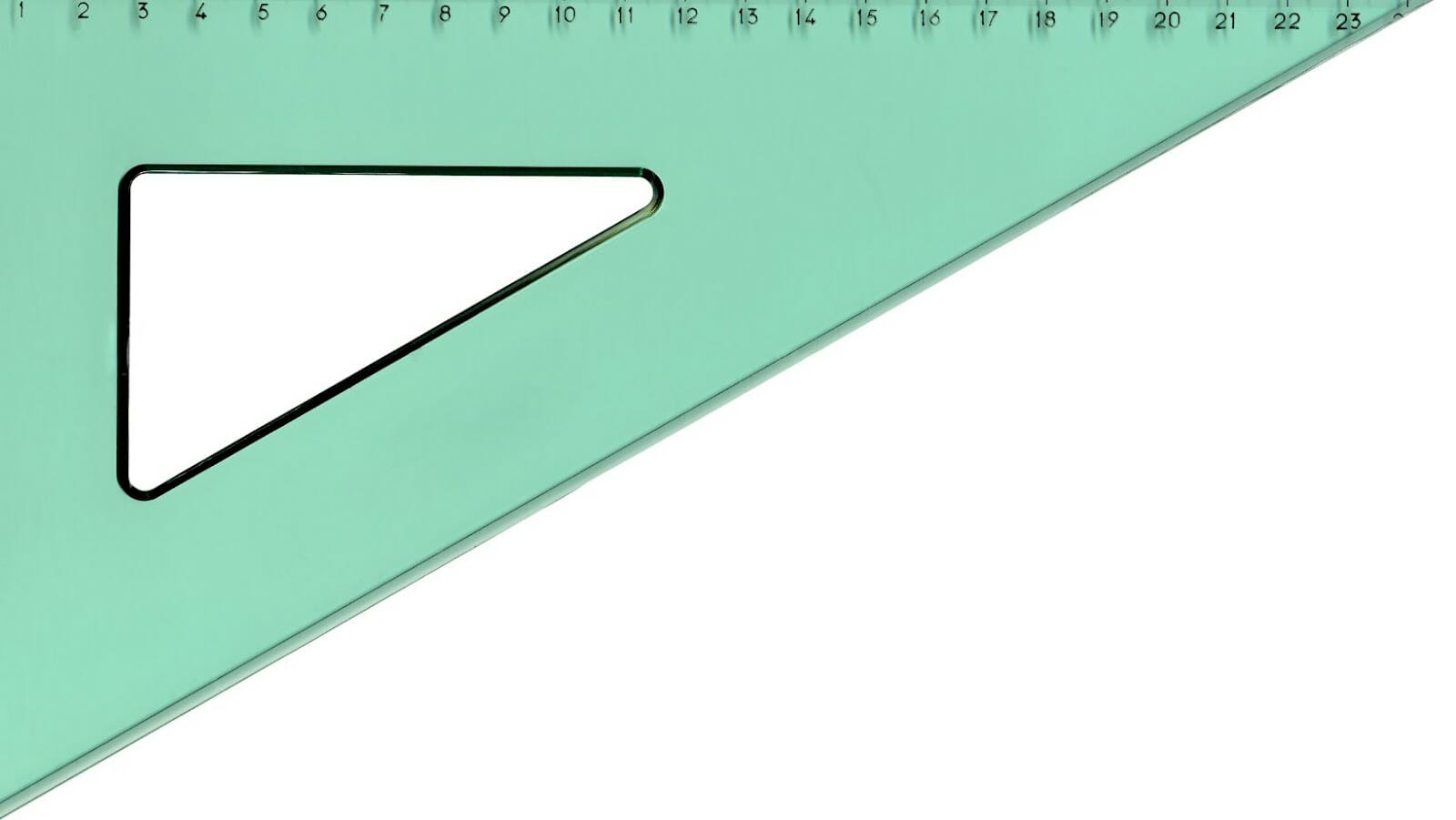Understanding exterior angles of triangles is an important part of geometry. Each exterior angle of a triangle corresponds to the side opposite of it. The exterior angle is represented as ∠meg for the side of the triangle opposite of M, ∠neg for the side opposite of N, ∠peq for the side opposite of P and ∠rfs for the side opposite of R.
In this article, we will further explore exterior angles of triangles and learn some interesting facts about them.
Which Represents an Exterior Angle of Triangle egf? ∠meg ∠neg ∠peq ∠rfs
An exterior angle of a triangle is formed by extending any of its sides and the adjacent side. The exterior angle is equal to the sum of the opposite interior angles. For example, if the two opposite interior angles are 40 and 60 degrees, then the exterior angle would be 100 degrees.
The sum of all the exterior angles of a triangle is always equal to 360 degrees, regardless of the size or shape of the triangle.
Another interesting fact is that the measure of an exterior angle of a triangle is always greater than either of the two opposite interior angles. This is because an exterior angle encompasses one interior angle and a portion of the second interior angle.
The concept of exterior angles is crucial in the study of polygons, as the exterior angles of any polygon also add up to 360 degrees. Understanding exterior angles can help to solve complex maths problems involving shapes and spatial relationships.

How to Calculate the Value of an Exterior Angle of a Triangle
To calculate the value of an exterior angle of a triangle, follow these simple steps:
| Add the two interior angles that are adjacent to the exterior angle. |
| Subtract the sum from 180 degrees |
| The result is the value of the exterior angle. |
| For instance, if two interior angles of the triangle measure 75 and 50 degrees, adding them will give 125 degrees. Subtracting 125 from 180 degrees yields the measure of the exterior angle, which is 55 degrees. |
Interesting facts about the exterior angle of a triangle include:
| The sum of the measures of the exterior angles of a polygon is always 360 degrees. |
| The exterior angle of a triangle is always equal to the sum of the two opposite interior angles. |
| The exterior angles of a triangle may be used to determine the shape of a polygon, among others. |
Pro Tip: Remember that the exterior angle of a triangle is formed at the vertex where one side of the triangle is extended outwards.
Relationship between Interior and Exterior Angles of a Triangle
The interior and exterior angles of a triangle are related and can be used to find missing angle measurements in geometric figures. The relationship between the two is as follows:
The sum of the measures of the exterior angles of a triangle is 360 degrees.
An exterior angle of a triangle is equal to the sum of the two remote interior angles.
Interesting facts about exterior angles of a triangle include:
- An exterior angle of a triangle is always greater than either of its corresponding remote interior angles.
- Each exterior angle has its corresponding remote interior angle.
- The exterior angles of a triangle can be used to construct parallel lines and to determine supplementary and complementary angles.
Understanding the relationship between interior and exterior angles of a triangle is important for solving problems related to geometry and trigonometry.
| Pro Tip: Use the relationship between interior and exterior angles to check your work when solving geometric proofs or problems. |
Properties of Exterior Angles of Triangles
An exterior angle of a triangle is the angle formed by any side of the triangle and the extension of its adjacent side. In a triangle, the sum of the three exterior angles of the triangle is always equal to 360 degrees.
In the triangle represented by the angles ∠meg ∠neg ∠peq ∠rfs, each exterior angle would represent an exterior angle of the triangle. Let’s learn more about exterior angles of triangles.
Exterior Angle Theorem and its proof
The Exterior Angle Theorem states that the measure of an exterior angle of a triangle is equal to the sum of the measures of its two remote interior angles. In Euclidean geometry, it is a fundamental theorem with a myriad of practical applications in various fields like architecture, engineering, and physics. These applications range from structural analysis and fluid dynamics to tasks like the moment of inertia calculation.
To prove the theorem, draw a line parallel to one side of the triangle and extend the adjacent side of the triangle to intersect the parallel line. The exterior angle is formed by the other side of the triangle and the extended adjacent side. The theorem can then be proven by applying the congruent interior angles theorem and the fact that the sum of the interior angles of a triangle is 180 degrees.
An interesting fact about exterior angles of a triangle is that each exterior angle is supplementary to its adjacent interior angle. This property can be used to calculate missing angles in a variety of geometric shapes.
Alternate Exterior Angles and their properties
Alternate exterior angles are formed when two parallel lines are crossed by a third line. Alternate exterior angles lie on opposite sides of the transversal and exterior to the parallel lines. They have some interesting properties that can be useful in geometry.
| Key Properties |
| – Alternate exterior angles are congruent, which means they have the same angle measure. |
| – The sum of the alternate exterior angles is always equal to 180 degrees. |
| – Alternate exterior angles are equal in measure to interior angles that are supplementary to them. |
Apart from these properties, the exterior angle of a triangle is also an interesting concept. The exterior angle of a triangle is equal to the sum of the two opposite interior angles. In other words, it’s the angle formed by extending one side of the triangle and the adjacent side.
Pro Tip: Understanding the properties of angles can help you in solving geometric problems and proofs.

Corresponding Exterior Angles and their properties
An exterior angle of a triangle is formed when a side of a triangle is extended. The exterior angle is the angle between the extended side and the adjacent interior angle. Here are some important properties of exterior angles of triangles:
| Property | Description |
| Each exterior angle of a triangle is equal to the sum of its adjacent interior angles. | |
| The measure of an exterior angle of a triangle is greater than the measure of any of its corresponding remote interior angles. | |
| The sum of the measures of the exterior angles of a triangle is always 360 degrees. | |
| The exterior angle theorem states that the measure of an exterior angle of a triangle is equal to the sum of the measures of its corresponding remote interior angles. | |
| Another interesting fact about exterior angles of triangles is that if you extend each side of a regular polygon, the sum of the exterior angles will always be 360 degrees, regardless of the number of sides. |
These properties can be useful for solving problems related to triangles and polygons, and for understanding the relationships between their angles.
Applications of Exterior Angles of Triangles
Exterior angles of triangles, such as ∠meg, ∠neg, ∠peq, and ∠rfs, have multiple applications in fields such as mathematics, physics, and engineering. The exterior angle of a triangle can be used to calculate the area, perimeter, and angles of the triangle. Additionally, exterior angles of triangles can be used in geometric constructions and problem solving.
In this article, we will explore the various applications of exterior angles of triangles.
Finding angle measures in geometric constructions
One useful application of the exterior angles of triangles is to find angle measures in geometric constructions. This technique can be used to find the measure of angles that cannot be easily measured directly. To find the measure of an angle using the exterior angle of a triangle, follow these steps:
| Draw a triangle and extend one side. |
| Measure the exterior angle, which is the angle formed by the extended side and the adjacent angle. |
| Subtract the exterior angle from the sum of the other two interior angles to find the measure of the angle you’re interested in. |
Interestingly, the measure of each exterior angle of a triangle is equal to the sum of the measures of the two non-adjacent interior angles. This is known as the Exterior Angle Theorem and can be used to solve problems involving angles and triangles. Another interesting fact is that the exterior angles of a polygon always add up to 360 degrees. This property can be used to find the number of sides in a polygon when given the measure of each exterior angle.

Using exterior angles to prove triangle congruence
Exterior angles of a triangle can be used to prove the congruence of triangles. When two triangles have an equal measure of the exterior angle and non-included side, they are congruent. This is known as the Exterior Angle Theorem.
| For example, | if triangle ABC and DEF have the same measure of exterior angle at vertex B and equal non-included side AB and DE, then they are congruent. |
Interestingly, the measure of an exterior angle of a triangle is equal to the sum of the measures of the two opposite interior angles. Additionally, if the vertices of an exterior angle and its adjacent angles are connected, then they form a straight line, resulting in an angle measure of 180 degrees.
Knowing these properties of exterior angles can help in solving various problems in geometry.
Pro tip: Practise drawing triangles and measuring their exterior angles and their opposite interior angles to better understand the concepts of triangle congruence and geometric properties.
Clustering problems related to exterior angles of triangles including given angle measures, congruence and similarity tests.
Clustering problems related to exterior angles of triangles involve analyzing given angle measures, as well as using congruence and similarity tests to solve complex triangle problems.
Here are some other interesting facts about exterior angles of triangles that can be useful in such problems:
| The exterior angle of a triangle is equal to the sum of its opposite interior angles. |
| The measure of an exterior angle of a triangle is greater than either of its opposite interior angles. |
| The exterior angles of similar triangles are congruent. |
| The exterior angles of a regular polygon add up to 360 degrees, with each exterior angle being equal to 360 divided by the number of sides. |
Understanding these facts about exterior angles of triangles can help in solving more complex problems related to clustering and applications of exterior angles.


